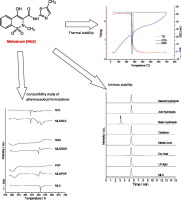- Home
- Blog
- News
- Basics
- Sources
- Agencies, Regulatory & Organisations
- CERSI Excipients Browser
- Excipient Report
- Excipient DMF List
- EXCiPACT Certified Companies
- Excipient Documentation
- Excipient EINECS Numbers
- Excipient E-Numbers
- FDA Inactive Ingredient List
- FDA GRAS Substances (SCOGS) Database
- IPEC Americas
- USP - U.S. Pharmacopeia
- Definitions
- Whitepapers / Publications
- Supplier
- Services
- Media
- Events
- 1st pharmaexcipients Poster Award
- Event Calendar
- Events featured by pharma-excipients
- 4th Annual Formulation & Drug Delivery Congress
- DDF Summit
- ExcipientFest Americas
- ExcipientFest Asia
- Global CompliancePanel
- International Conference and Exhibition on Pharmaceutics & Novel Drug Delivery Systems
- Formulation & Drug Delivery USA Congress
- Laboratory Medicine 2018
- Making Pharmaceuticals Europe
- Making Pharmaceuticals Exhibition
- Pharma Integrates
- PharmaExcipients China @CPhI China
- TTC Technology Training Center
- Jobs
- Online Sourcing
- Contact
29. November 2017
Meloxicam (MLX) is a non-steroidal anti-inflammatory cyclooxygenase (COX) inhibitor that is used to relieve inflammation and pain. MLX has a preferential affinity for COX-2, which is associated with a lower incidence of gastrointestinal side effects. The drug belongs to Class II of the Biopharmaceutical Classification System (BCS) in which dissolution is the limiting step of its bioavailability. In view of this classification, carrying out further studies regarding the compatibility of MLX with...
14. March 2017
Abstract Using pharmaceutical salts in solid dosage forms can raise stability concerns, especially salt dissociation which can adversely affect the product performance. Therefore, a thorough understanding of the salt instability encountered in solid state formulations is imperative to ensure the product quality. The present article uses the fundamental theory of acid base, ionic equilibrium, relationship of pH and solubility as a starting point to illustrate and interpret the salt formation and...
28. January 2017
Abstract The objective of this work was to access thymol-excipient compatibility using an alternative protocol of mixture design subsidizing the development of nanostructures lipid carriers containing this drug. Simultaneous DTA-TG analyses associated with infrared spectroscopy were performed according to simplex centroid mixture designs with three components. Two designs were used: the design A containing stearic acid (SA), soybean lecithin (LC), and sodium taurodeoxycholate (TAU) and the...
17. January 2017
Abstract A simple chemometric-assisted UV-spectrophotometric method was used to study the compatibility of clindamycin hydrochloride (HC1) with two commonly used natural controlled-release polymers, alginate (Ag) and chitosan (Ch). Standard mixtures containing 1:1, 1:2, and 1:0.5 w/w drug–polymer ratios were prepared and UV scanned. A calibration model was developed with partial least square (PLS) regression analysis for each polymer separately. Then, test mixtures containing 1:1 w/w...
03. January 2017
Abstract Aspirin is apt to hydrolyze. In order to improve its stability, a new method has been developed involving the application of hot-melt sub- and outercoating combined with enteric aqueous coating. The main aim was to investigate the influence of these factors on the stability of ASA and understand how they work. Satisfactory storage stability were obtained when the aspirin tablet core coated with Eudragit®L30D55 film was combined with glycerin monostearate(GMS) as an outercoat....
12. December 2015
17. November 2015
Objectives: The purpose of the study was to develop a floating matrix tablet of Nicorandil using blends of hydrophilic cellulose and pH-independent acrylic polymer to improve the therapeutic effectiveness of the drug in cardiovascular disease. More
24. September 2015
Carvedilol (CARV) is a widely used non-selective β-blocker, which has shown low bioavailability after oral administration (20 %) due to its low water solubility and intense first-pass metabolism. Lipid-based drug delivery systems have been proposed to improve CARV oral bioavailability. An evaluation of drug–excipient compatibility is needed to clarify potential physical and chemical interactions between them and therefore guarantee a correct selection of excipients. More

